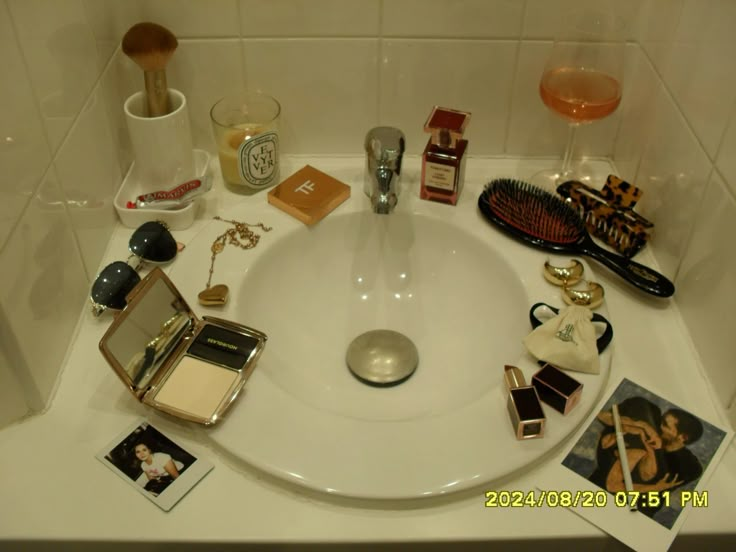Minimalism is a Class Fantasy: Who Gets to Declutter, and Who Can’t Afford To?
In the minimalist dream world, everything is matte. The apartment has two chairs. The wardrobe has a graveyard of neutrals. There is one sculptural bowl containing oranges and the caption says, "Intentional Living."
It is the Instagram fantasy of peace: a soft beige haven in which nothing is out of order, and even your bowl of fruit holds existential value.
But zoom out.
Behind that perfectly curated blank space, there is a not-so-minimal truth: it requires money to own nothing. Minimalism is expensive. “Less” only works if you had “more” first.
To dispose of things, you have to be able to believe you could replace them. To donate extras, such as your excess coats and hats, you need to be confident you won't need them next winter. To idolize a nearly empty fridge, you must not have to worry about food insecurity in the upcoming months. The way we are sold minimalism today isn't a lifestyle; it's a status symbol. Because only those who have never been poor will believe that less is more.
If you're familiar with the TikTok fridge tours, you know the aesthetic: one lemon, two cans of LaCroix, and a dream. But walk into an immigrant household. Or your grandma’s flat. Or into the one-bedroom where a first-gen student lives with three roommates and five dreams. You will not find minimalism. You will find resourcefulness. Three generations of Tupperware. A shelf full of expired face creams. Minimalism says, "Get rid of the past." But what if all you have is your past?
In many homes, especially immigrant and working-class ones, keeping stuff is how families archive love, trauma, and survival, in addition to using necessities for as long as possible. There is a particular brand of minimalist TikTok creators who film themselves disposing of "unnecessary" appliances in the kitchen. They have many opinions about "visual clutter" and rice cookers that "only do one thing." However, for many Asian families, a rice cooker is meaningful, not just a utility. It is a part of ritual and memory, often a silent reminder of intergenerational care. Dismissing it as visual noise completely disregards the issue. Minimalism loves erasure as long as it looks nice, especially when it fits a clean grid.
But ultimately, rich people don’t declutter – they displace. Minimalism isn't anti-consumerism; it's consumerism with new white walls, soft lighting, and affiliate links. Influencers have made “intentional living” a profitable and high-margin business. Influencers share perfectly clean countertops or decluttered pantries on TikTok and Instagram, but then link the $60 matte label spice jars or "minimalist home essentials" that they use in their bios. Content creators like @the.minimal.mom and @kaity_modern provide aesthetic calm in curated shelves and paid posts, but are ultimately selling this lifestyle. Even self-acclaimed decluttering experts like Kylie Perkins (@sociallykylie) use their platform to sell "starter kits" for owning less – packaged, priced, and marketed.
In TikTok terms, the tag “minimalist aesthetic” (with billions of views) has influencers showing us how to throw out “clutter” and insert sleeker, whiter, flatter things in our homes, usually from their Amazon storefronts. Behind every blank slate is a “link-in-bio”.
Credit: @pureandyou on Instagram
And finally, there are the brands (less camouflaged than the individuals) that are selling you the lifestyle: The Row, Parachute, Muji, etc.—brands that thrive on words like "essential," "timeless," and "edit." These brands aren't selling excess, but refinement. You aren't just buying 10 shirts anymore; you are buying one shirt and it costs $125, so that consumers feel as if they are dealing with more than just ordinary things.
Aesthetic organization services like The Home Edit or applications like Cladwell (a “capsule wardrobe” creator) are part of the monetized loop: remove everything, and then pay for help putting it back “better.” The bar is no longer less; it’s less, but it’s optimized. Overall, minimalism is not buying less. It’s buying right. And someone is always there to sell you that.
But what about the emotional stuff? What about grief or trauma or memory?
You don't downsize your mom's handwritten letters or her earrings, which you haven't worn since she passed. Or the shirt you wore to your first job. Or that notebook you took notes in during class, which you are convinced is imbued with magic that makes you pass tests.
Minimalism doesn't know what to do with emotional sentiment. So it calls this emotion "mess."
Listen. If minimalism brings you peace, kudos. But we must be careful not to equate aesthetic stillness with universal healing. Holding onto things keeps us human. Not everyone wants an empty home to come back to. And not everyone can afford it.
Minimalism sounds nice until you realize that having “less” costs money. The $500 luxury handbag. The $90 hand soap. The curated, color-coded pantry. This version of “less” clearly has a price tag. And Gen-Z? We are not exactly rolling in it.
Gen-Z is entering a job market that looks more like a caution sign than a welcome mat. Rent eats half our paychecks, side hustles are basically our personality traits, and ‘wage growth’ hasn’t really grown since the days of Tumblr. Add student loan debt, and you bet we’re running mental calculations with every Apple Pay swipe.
Minimalism was never built for a struggling Gen-Z. But it was built to be sold to us. And now, we can see past the marketing. So no, we aren’t buying the fantasy of empty rooms and $300 linen sets. We’ll take our lives loud, layered, and unapologetically full. Flex your fridge magnets. Post your “ugly” drawer. Show us the pile of unfolded clothes sitting in the corner of your bed.
Because we’re not hoarders. We’re personal historians with anxiety, hot glue guns, and a lot to say.



